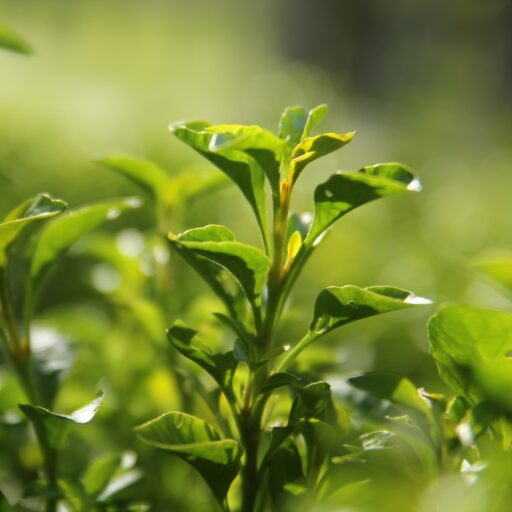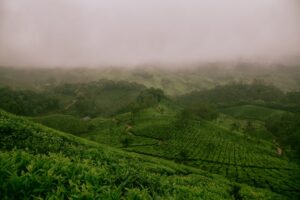Support our educational content for free when you purchase through links on our site. Learn more
[2023] Does Growing Tea Require a Lot of Water?
Quick Answer:
Growing tea requires a moderate amount of water, but the specific water requirements vary depending on factors such as the tea variety, climate, and soil conditions. Tea plants generally prefer well-drained soil and regular watering, but overwatering can lead to root rot. It is important to strike a balance and provide adequate moisture without waterlogging the plants.
Table of Contents:
- Quick Tips and Facts
- Best Conditions for Growing Tea
- Are Tea Plants Hard to Grow?
- Sun or Shade: What Do Tea Plants Prefer?
- How Much Water Do Tea Plants Need?
- Watering Tips for Growing Tea
- Frequently Asked Questions
- Conclusion
- Recommended Links
- Reference Links
Quick Tips and Facts
- Growing tea requires a moderate amount of water.
- Tea plants prefer well-drained soil and regular watering.
- Overwatering can lead to root rot and other issues.
- Factors such as tea variety, climate, and soil conditions influence water requirements.
- It is important to strike a balance and provide adequate moisture without waterlogging the plants.
Best Conditions for Growing Tea
To successfully grow tea, it is important to create the ideal conditions for the plants. Here are some key factors to consider:
-
Climate: Tea plants thrive in moderate climates with temperatures ranging from 50°F to 85°F (10°C to 29°C). They prefer regions with high humidity and consistent rainfall.
-
Soil: Tea plants prefer well-drained soil with a pH level between 5.5 and 6.5. The soil should be rich in organic matter and have good water retention capabilities.
-
Water: Tea plants require regular watering, especially during dry periods. However, waterlogged soil can lead to root rot and other issues. It is important to strike a balance and provide adequate moisture without overwatering.
-
Sunlight: Tea plants need partial shade to thrive. They prefer areas with filtered sunlight or dappled shade. Direct sunlight can scorch the leaves and affect the flavor of the tea.
-
Altitude: Tea plants grow best at higher altitudes, typically between 2,000 and 6,000 feet (600 to 1,800 meters) above sea level. The cooler temperatures and reduced oxygen levels at higher altitudes contribute to the development of desirable flavors in the tea leaves.
For more detailed information on growing tea in different conditions, check out our article on Soil and Climate for Tea.
Are Tea Plants Hard to Grow?
Tea plants can be challenging to grow, but with the right knowledge and care, they can thrive in suitable conditions. Here are some factors to consider:
-
Patience: Tea plants take time to establish and reach maturity. It can take several years before the plants are ready for harvest.
-
Expertise: Growing tea requires knowledge of the specific tea variety you are cultivating, as different varieties have different requirements. It is important to research and understand the specific needs of the tea plants you are growing.
-
Maintenance: Tea plants require regular pruning, fertilizing, and pest control. They are susceptible to pests such as aphids, mites, and caterpillars. Regular maintenance is essential to ensure healthy growth.
-
Climate: Tea plants are sensitive to extreme temperatures and frost. They thrive in moderate climates and may require additional protection during colder months.
Despite the challenges, growing tea can be a rewarding experience for tea enthusiasts. The satisfaction of harvesting and brewing your own tea makes the effort worthwhile.
Sun or Shade: What Do Tea Plants Prefer?
Tea plants prefer partial shade to thrive. Here’s why:
-
Filtered Sunlight: Tea plants prefer areas with filtered sunlight or dappled shade. Direct sunlight can scorch the leaves and affect the flavor of the tea. Shade helps to protect the delicate leaves and maintain their quality.
-
Temperature Regulation: Shade helps regulate the temperature around the tea plants, preventing excessive heat stress. Tea plants thrive in moderate temperatures, and shade provides a cooler environment.
-
Flavor Development: The shade-grown leaves tend to have a more delicate flavor and aroma compared to those grown in direct sunlight. Shade-grown tea is highly valued for its nuanced flavors.
To create the ideal conditions for your tea plants, consider providing shade using structures like shade cloth or strategically planting taller trees or shrubs nearby.
How Much Water Do Tea Plants Need?
The water requirements of tea plants vary depending on several factors, including the tea variety, climate, and soil conditions. Here are some general guidelines:
-
Establishment Phase: During the first year of planting, tea plants require regular watering to establish their root systems. Water deeply and frequently, ensuring the soil remains consistently moist but not waterlogged.
-
Mature Plants: Once tea plants are established, they still require regular watering, especially during dry periods. Aim to provide about 1 inch (2.5 cm) of water per week. However, adjust the frequency and amount based on the specific needs of your tea plants and the local climate.
-
Rainfall: Tea plants prefer consistent rainfall, but excessive rainfall can lead to waterlogging and root rot. If your region receives heavy rainfall, ensure proper drainage to prevent water accumulation around the roots.
-
Soil Moisture: Regularly monitor the moisture levels in the soil. Tea plants prefer well-drained soil, so avoid overwatering or allowing the soil to become waterlogged.
For more specific information on watering tea plants, check out our article on Green Tea Cultivation.
Watering Tips for Growing Tea
To ensure optimal growth and health of your tea plants, follow these watering tips:
-
Watering Schedule: Develop a watering schedule based on the specific needs of your tea plants and the local climate. Tea plants generally require regular watering, especially during dry periods.
-
Deep Watering: Water deeply to encourage the roots to grow deeper into the soil. This helps the plants access moisture during drier periods.
-
Mulching: Apply a layer of organic mulch around the base of the tea plants to help retain moisture in the soil. Mulch also helps suppress weed growth and regulates soil temperature.
-
Avoid Overwatering: Tea plants prefer well-drained soil, so avoid overwatering or allowing the soil to become waterlogged. Overwatering can lead to root rot and other issues.
-
Monitor Soil Moisture: Regularly check the moisture levels in the soil. Stick your finger into the soil to a depth of about 1 inch (2.5 cm). If it feels dry at that depth, it’s time to water.
Remember, the specific watering requirements may vary depending on the tea variety, climate, and soil conditions. It’s important to observe your plants and adjust your watering practices accordingly.
Frequently Asked Questions
What are the best conditions for growing tea?
The best conditions for growing tea include moderate climates with temperatures ranging from 50°F to 85°F (10°C to 29°C), well-drained soil with a pH level between 5.5 and 6.5, regular watering, partial shade, and higher altitudes between 2,000 and 6,000 feet (600 to 1,800 meters) above sea level. These conditions contribute to the optimal growth and flavor development of tea plants.
Are tea plants hard to grow?
Tea plants can be challenging to grow, requiring patience, expertise, and regular maintenance. They are sensitive to extreme temperatures and frost, and they require specific soil conditions, regular pruning, fertilizing, and pest control. However, with the right knowledge and care, tea plants can thrive in suitable conditions.
Do tea plants like sun or shade?
Tea plants prefer partial shade to thrive. They prefer areas with filtered sunlight or dappled shade. Direct sunlight can scorch the leaves and affect the flavor of the tea. Shade helps protect the delicate leaves and maintain their quality.
How often should I water my tea plants?
Tea plants generally require regular watering, especially during dry periods. Aim to provide about 1 inch (2.5 cm) of water per week. However, adjust the frequency and amount based on the specific needs of your tea plants and the local climate. Monitor the moisture levels in the soil and avoid overwatering or allowing the soil to become waterlogged.
Conclusion
Growing tea requires a moderate amount of water, but the specific water requirements vary depending on factors such as the tea variety, climate, and soil conditions. Tea plants prefer well-drained soil and regular watering, but overwatering can lead to root rot. It is important to strike a balance and provide adequate moisture without waterlogging the plants. By creating the ideal conditions for tea plants, including partial shade, proper watering, and suitable soil, you can enjoy the satisfaction of growing your own tea.
Recommended Links
- Shop Tea Plants on: Amazon | Walmart | Etsy
- Shop Shade Cloth on: Amazon | Walmart | Etsy
- Shop Organic Mulch on: Amazon | Walmart | Etsy
- For further reading, check out our article on How hard is tea to grow?
Visit the Growing Teas™ website for more information on growing teas and exploring our wide range of tea-related articles and resources.







